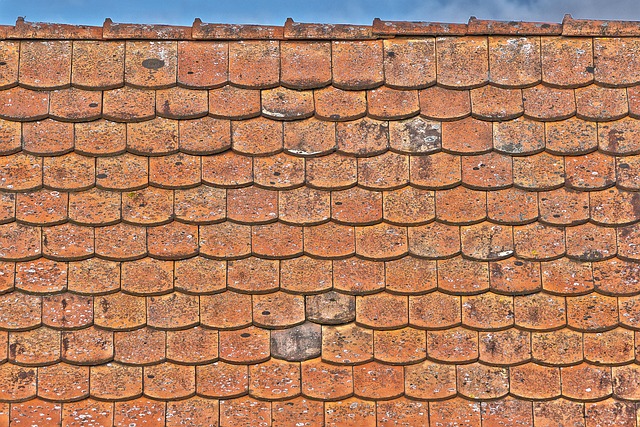Evaluating affordable roof estimates involves considering material type (asphalt vs. metal), structural design, climate, and local labor rates beyond initial installation costs. Durability, influenced by material quality, climate, age, and maintenance history, impacts long-term expenses. Requesting detailed estimates from contractors allows homeowners to compare prices, prioritize repairs, and ensure transparency. Case studies of successful long-term maintenance strategies, like 'cool roofs', offer valuable insights for minimizing replacement and repair needs.
Evaluating long-term maintenance and durability costs is crucial for any property owner. This comprehensive guide delves into the intricate world of roofing, offering insights on understanding and managing expenses. We explore factors influencing roof durability and their cost implications, providing a roadmap to budgeting for maintenance and replacements with strategic advice. Additionally, real-world case studies showcase examples of long-lasting roofs, illuminating practical approaches to achieving affordable roof estimates while ensuring structural integrity.
Understanding Long-Term Maintenance Costs: An Overview
Evaluating long-term maintenance costs is a crucial step in ensuring the durability and affordability of any structure, especially when it comes to roofs. An affordable roof estimate doesn’t just include the initial installation or repair expenses; it’s a comprehensive forecast of future expenditures related to upkeep, replacement, and maintenance. These costs can vary widely depending on factors like material type, structural design, climate, and local labor rates.
For instance, while asphalt shingles might be more cost-effective in terms of initial installation, they may require more frequent replacements over time due to their susceptibility to wear and tear compared to metal or tile roofs. Conversely, metal roofing could offer a longer lifespan but may come with higher upfront costs and specific maintenance requirements. Understanding these nuances is key to making informed decisions that balance durability, aesthetics, and financial viability for any long-term investment in roofing.
Factors Influencing Roof Durability and Its Cost Implications
The durability of a roof is influenced by several factors, each carrying significant cost implications. Material quality and type are primary considerations; high-quality materials often come with higher upfront costs but guarantee extended longevity, thereby reducing long-term expenses through reduced replacement frequency. Climate conditions play a crucial role too; regions with extreme weather patterns may require sturdier roofs, impacting initial installation prices. Age and maintenance history of the roof also matter; regular upkeep can significantly extend its lifespan, while neglecting maintenance will accelerate wear and tear, necessitating more frequent replacements.
Affordable roof estimates are possible by balancing these factors. Strategic choices, like opting for high-durability materials suitable for local climates or scheduling proactive maintenance, can minimize overall costs. Regular inspections help in early detection of issues, preventing minor problems from escalating into major, costly repairs. Thus, while initial investment may vary based on these considerations, a well-planned approach ensures optimal roof durability and long-term financial savings.
Affordable Roof Estimate: Unpacking the Components
When evaluating an affordable roof estimate, it’s crucial to understand that the overall cost isn’t merely a single figure; it’s a comprehensive breakdown of various components. These include materials used for roofing, labor costs for installation or repair, and additional expenses such as permits and inspections. Each component plays a significant role in determining the final price tag, making it essential to request a detailed estimate from potential contractors.
For instance, affordable roof estimates should clearly outline the type and quantity of materials, like shingles or metal panels, along with their corresponding prices. Similarly, labor rates should be itemized based on tasks performed—from initial assessment and measurement to installation, sealing, and final inspection. By scrutinizing these elements, homeowners can gain insights into potential savings areas and ensure they’re receiving a fair and transparent quote for their roof project.
Strategies for Budgeting Maintenance and Replacement
When budgeting for long-term maintenance and durability, one effective strategy is to secure affordable roof estimates. These detailed assessments provide a clear picture of current conditions, identifying areas that require immediate attention and those that can wait. By prioritizing repairs and replacements based on urgency and cost, you ensure that your investment is allocated efficiently.
Additionally, implementing preventive measures can significantly reduce maintenance costs over time. Regular inspections, for instance, allow for early detection of issues, preventing small problems from escalating into major, costly repairs. Similarly, choosing durable materials and high-quality craftsmanship during initial installations can lead to longer lifespans, delaying the need for replacements and keeping your budget in check.
Case Studies: Real-World Examples of Durable Roofs and Their Maintenance
In the realm of long-term maintenance, examining real-world examples offers valuable insights into durable roofing solutions. Case studies of well-maintained roofs can provide a roadmap for homeowners and builders seeking affordable roof estimates. For instance, many commercial properties equipped with metal roofing systems have demonstrated exceptional longevity, often exceeding 50 years with minimal replacement or repair needs. These systems, characterized by their resistance to corrosion and high wind loads, offer a compelling example of strategic long-term investment in roofing.
Additionally, the increasing popularity of cool roofs—designed to reflect sunlight and reduce interior heat gain—not only enhances energy efficiency but also extends roof lifespan. Regular inspections and timely repairs, as evidenced in these case studies, are key factors in maintaining durability. By learning from real-world applications, individuals can make informed decisions when it comes to choosing roofing materials and anticipating maintenance costs, ultimately ensuring a robust and cost-effective roof for years to come.
When evaluating roofs, understanding long-term maintenance costs is key. By considering factors like durability and material choices, homeowners can secure affordable roof estimates that stand the test of time. Through strategic budgeting and real-world case studies, this article has equipped readers with the knowledge to navigate the process effectively, ensuring their roofs provide years of reliable protection. Investing in informed decisions now translates to significant savings and peace of mind down the line.
